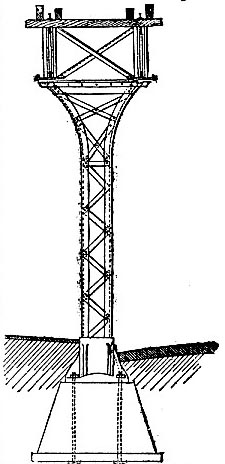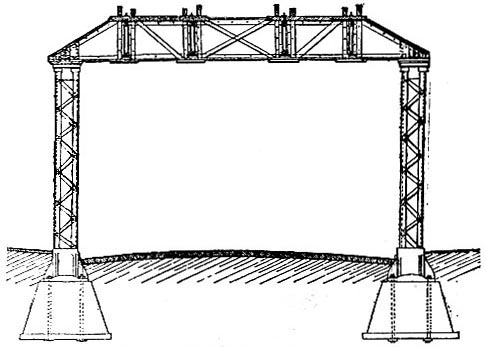1902 Encyclopedia > Railway, Railways (Railroad) > New York Elevated Railroad
Railway, Railways
(Part 25)
D. METROPOLITAN RAILWAYS (cont.)
New York Elevated Railroad
We may take the "elevated railroads" of New York as an instance of metropolitan railways for local service above the ground. In 1867 the first attempt was made to improve existing means of transit between the residential and the business quarters of the city by the construction of an elevated railroad worked by a wire rope and a stationary engine. The railroad passed into other hands in 1872, and the New York Elevated Railroad Company was formed. The lines of this and of the Metropolitan Elevated Railroad Company are now worked together by the Manhattan Railway Company. From the southern terminus of the former railway at South Ferry diverge the lines by which the eastern and western sides of the city are traversed. Junctions are made with the Grand Central Depot of the New York Central and other railroads, and with the New York City and Northern Railroad. In the beginning of 1880 the elevated system was worked over 34 1/2 miles of line; in 1884 96,702,620 passengers were carried over the system, averaging 265,000 per day, over half on one line (3rd Ave.). Trains run every two minutes in the morning and evening, when the fares are 5 cents or 2 1/2d. for any distance; and in the quieter hours of the day ever four or five minutes for a general fare of 10 cents or 5d. The working charges amounted in 1883-84 to 58 per cent. of the gross earnings.

Fig. 27. New York Elevated Railroad. Square lattice-work columns.
On the New York Elevated Railroad the line is supported on square wrought-iron lattice-work columns let into cast-iron base blocks founded on brickwork and concrete, at distances of from 37 to 44 feet apart. Where the street traffic is crowded a single row of columns is planted in the line of each curb, on the upper ends of which a pair of longitudinal girders are fixed to carry a line of way, 22 1/2 feet high above the street level, as shown in fig. 27, at each side of the street. In other situations the two lines of way are supported at a height of 21 feet on longitudinal girders in the middle of the street, fixed to transverse girders, which span the street and are carried on columns at the curbs.

Fig. 28. New York Elevated Railroad. Section.
A third arrangement is adopted where the columns are planted in the street at a distance transversely of 23 1/2 feet, as in fig. 28, each carrying a line of rails at a height of 18 feet, and connected at intervals by arched bracing to steady the structure. In this illustration the street is occupied by a double line of tramway.
The rails are of the Vignoles pattern, of Bessemer Steel, weighing 50 lb per yard, spiked to cross timber sleepers, and guarded by two longitudinal timbers, one on each side of each rail. The sharpest curve on the main line has 90 feet of radius. The gradients conform, for the most part, to those of the streets, and the steepest gradient is 1 in 50 for a length of 800 yards.
The traffic is worked with outside cylinder, four-coupled wheel, bogie-truck locomotives, weighing in working order 19 1/2 tons. The driving-wheels are 3 1/2 feet in diameter, and the cylinders 12 inches in diameter with a stroke of 16 inches. The cars are of the usual American type, entered from each end, 45 feet long and 8 wide, with seats for forty-two passengers. They are placed on two bogie trucks, and weigh 12 tons. The trains are provided with continuous air-brakes.
The stations are about one-third of a mile apart; the platforms are 200 feet long and 13 wide.
The cost per mile of double way is given by Mr. R. E. Johnston as follows:—

No payment has been made for way-leave along the streets, nor for compensation to frontages, though it is known that in the residential quarters traversed by the railroads rents in many instances, at least, been depreciated to the extent of 50 per cent.
Read the rest of this article:
Railway, Railways - Table of Contents
|


